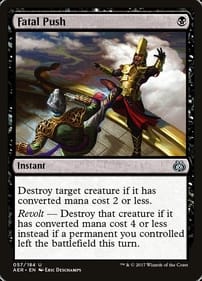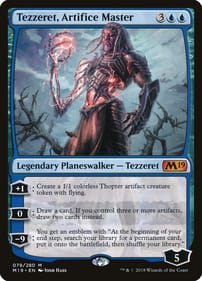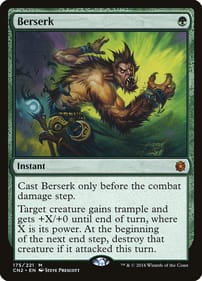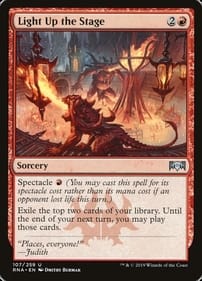Franklin the Turtle is Bombing Boats
By Dan Brown Ye shall know them by the pop culture they appropriate. There’s no better example than a troll post this week from U.S. Secretary of War Pete Hegseth. It shows a beloved Canadian cartoon icon, Franklin the Turtle, targeting narco terrorists with a rocket launcher from a helicopter overhead. The image was the former Fox News host’s way of mocking critics who have slammed U.S. Navy drone attacks on vessels coming from Venezuela. The difference, of course, is that there’s no evidence the real boats being bombed are manned by armed terrorists running drugs. If there was evidence, Hegseth would be posting that instead of a smiling, bloodthirsty Franklin. Being a huge pop-culture fan, you might think it upsets me when politicians mess with icons like Franklin the Turtle, but I have come around to a new way of thinking. I think it’s great, because it tells us exactly who they are. It puts a human face on government. If U.S. voters and folks around the world didn’t know anything about Hegseth before this, they now have all the information they need to make an assessment of his character. Commenters have been having a field day, with some telling Hegseth that Franklin is committing war crimes, which underlines the risk political leaders take when they dive into pop-culture waters. Oh, and Franklin’s publisher isn’t happy that their intellectual property has been co-opted, either. For me, it calls to mind a forgotten fact from the late 1990s when the Vatican released a list of movies it invited the faithful to check out. Strangely, 2001: A Space Odyssey was on there, which is still a puzzler to me. Why would the Vatican endorse a film in which an alien monolith provides the evolutionary spark that helps dumbass apes transform into humans? Why would it endorse a film with evolution at all? Doesn’t that fly in the face of the Christian creation story? I still don’t get it. But just as Hegseth’s use of Franklin the Turtle inadvertently tells me a lot about him, so did the Pope’s movie picks tell me something about the strangeness of the Vatican bureaucracy. One of the earliest examples in my life of politics and pop culture colliding was former vice-president Dan Quayle speaking out in 1992 against Murphy Brown for choosing to have a baby out of wedlock. Knowing Quayle was attacking a fictional character from a sitcom for an immoral life choice provided us with a fascinating glimpse into the Republican’s mind, confirming everything Quayle’s critics had been saying about him being an airhead. Did he know Murphy Brown is really a role played by Candace Bergen, not an actual broadcaster? (Quayle’s boss, George H.W. Bush, also slammed The Simpsons, saying the proper TV family to serve as role models should be the Waltons, not Homer and his brood. I am not even kidding, this actually happened.) I guess Franklin the Turtle firing a bazooka at bad guys is what we should expect more of, considering how the man who picked Hegseth to run the Pentagon is best-known as a former reality-show host Dan Brown has covered pop culture for more than 33 years as a journalist and also moderates L.A. Mood’s monthly graphic-novel group.
Autumn Mini-reviews
By Dan Brown Here are brief reviews of a some of the comics I’ve been reading this fall. As always, there’s no logic to these selections, other than each cover caught my eye on the new-releases shelf at L.A. Mood. Alien Vs. Captain America No. 1: The result of a partnership between Marvel and 20th Century Studios, this miniseries takes place during the Second World War. Last seen on the big screen in Alien: Romulus, the xenomorph is the weapon Nazis hope will turn the tide as the allies march closer to Germany. Best moment is when Cap uses his shield as a Frisbee to decapitate a baby alien that has just burst out of a chest cavity, about to jump Nick Fury. Herobear and the Kid: What can I say? I’m as much a sucker for a cartoon polar bear as the next guy. This all-ages book taps into the Calvin and Hobbes vibe with the young protagonist alluding to the final Bill Watterson strip by declaring, “We’re going explorin,’” in one of the opening panels. Also, the bear exists as a stuffed animal until he is bopped on the nose, which brings him to full-sized life. Fun. Binary No. 1: One of the big events happening over in the Marvel Universe these days is its Age of Revelation crossover, which takes place a decade into the future in an alternate North America where a virus has killed millions and turned the survivors into mutants. Oh, and Carol Danvers is once again Binary, but a Binary on steroids. “I have the powers of the Phoenix,” she explains. No biggie. Cloak or Dagger No. 1: Cloak and Dagger are also caught up in the Age of Revelation event. They seem to be government/military operatives. This story also has a marauding hippo, which I did not have on my bingo card. Probed & Loaded: Love the heedless energy of this Scott Wojcik/Jeff McClinchey joint. Our redneck heroes are abducted by a UFO, which is bad news for their alien captors. It’s a weird situation. “Lucky for me, weird is where I shine,” the Elvis-esque Gunny narrates. McClinchey’s art calls to my mind classic Mad Magazine stuff. Black Helm Saga No. 1: My favourite of the bunch. Created by Jeff McClinchey and Scott Brian Woods, it takes place in the interregnum between Ragnarok and the coming of a new world in a snowy forest. SBW’s pencils remind me of Jeff Lemire’s expressive lines. And the idea of a many-eyed, fanged monster lurking beneath the snow, waiting to push its way up like a great white shark, actually makes a lot of sense to me this dreary fall. Fantastic Four No. 4: A thought-provoking one-and-done story about aliens that appear to be cute, harmless puppies, but are actually many-tentacled beasts with jagged teeth. The only problem is that Alicia, Ben Grimm’s blind partner, is the only one who can perceive them in their true form. Loved the Skottie Young cover featuring H.E.R.B.I.E. the robot, who was last seen on the big screen this summer in First Steps. The Amazing Spider-Man No. 15: With a cover that riffs on Peter Parker’s first-ever glimpse of Mary Jane Watson, this story finds our arachnid hero having deep-space adventures which involve a sentient costume. “I have a complicated history with alien suits,” he deadpans at one point. This suit, called Glitch, is mechanical in nature, not organic like Venom. He also gets to kiss an alien with yellow skin and cat’s ears. Absolute Batman No. 1: This one actually came out a few months ago, and imagines a Gotham City in which Bruce Wayne is of humble means while the Joker is a billionaire. It has apparently generated quite a stir among fans of the Dark Knight. With Alfred as a traveling mercenary, it doesn’t lack action! What comics or graphic novels have you picked up this fall? If you have recommendations, I’d love to hear them in the comments! Dan Brown has covered pop culture for more than 32 years as a journalist and also moderates L.A. Mood’s monthly graphic-novel group.
A Small Thing but an Important Thing
By Dan Brown I miss “the wave.” What I’m talking about has nothing to do with standing up at the right time at a sporting event, I don’t mean that wave. What I’m referring to is a tiny gesture that has everything to do with courtesy on the road and making our divided world just a little more humane. If you’re a veteran driver like I am, who has had a license for 40 years, you likely have seen “the wave.” It goes like this. Let’s say you’re stuck in busy traffic and some car from a side street is trying to ease into your lane. Good Samaritan that you are, you stop going forward to let them in. As they pull into the path ahead of you, they stick a hand out the driver’s side window and motion in your direction. That’s “the wave.” And it’s disappearing. Which is a sad comment on where we’re at as a society. The wave, as I call it, is more than just a gesture. Sometimes it’s accompanied by a smile from the other driver, who is acknowledging that by letting them in you have done them a solid. It’s a way, from one stranger to another, of wordlessly saying, “I appreciate you, man, thanks!” After all, you don’t know that other driver. Allowing them some space ahead of your vehicle is not something you’re required to do by law – I do it because I recognize they may be having a tough day, and it costs me almost nothing, maybe a few seconds, to be courteous. And some day, I’ll be in the same position. I’ll be the one having a rough time who needs a small break from the universe in the form of a kindly fellow commuter. Many people have said chivalry is dead, and the wave is one way of acknowledging the chivalrous spirit. It’s the opposite of road rage – it’s road gratitude. (It reminds me of another driving habit, flashing your high beams to oncoming cars when you pass a police speed trap, but that might be a country thing.) There’s even song about small driving kindnesses by the group Geggy Tah, who sing: All I want to do is to thank you/ Even though I don't know who you are/ You let me change lanes/ While I was driving in my car. The wave is like saying, “Thank you” when the person ahead of you holds a door open for you when you’re entering a building. They weren’t mandated by law to do that. I hope I don’t overstate the case, but it’s one of those tiny things that makes life in a city such as London tolerable, enjoyable even. And I’m worried, since I haven’t seen it for some time. I haven’t been keeping detailed notes, but I would say in the last year or two I’ve let a fair number of people in ahead of me in traffic on my daily drive to and from work. But something’s missing. No wave. That’s why I’m troubled. Those other drivers don’t appear to feel any impetus to wave anymore. I think I’m being just as gracious a driver as I’ve always been. And I’m driving as much as I always did. But I suppose it could be my fault. Perhaps people fell out of the habit during the pandemic. If so, screw you COVID-19. Or maybe distracted driving is such a problem that people aren’t paying enough attention to lift their hand for just a second or two. Maybe tinted windows play a part. Or perhaps those drivers feel entitled to butt in ahead of me in traffic. All are possible. In fairness, I will say there is one group of drivers who can still be counted on to give the wave: School-bus operators. If you want to see another human being light up on your morning commute, obey the law and stop when a school bus in the other lane has its lights flashing. And those bus drivers certainly don’t have to wave to you! Dan Brown has covered pop culture for more than 33 years as a journalist and also moderates L.A. Mood’s monthly graphic-novel group.
Merc With A Mouth Crashes Into Dark Knight’s World
By Dan Brown There’s nothing unusual about someone hiring Deadpool to carry out a contract killing. But when his latest job takes him to Gotham City, that’s when comic fans know this is no ordinary assignment. Deadpool/Batman is the latest comic-industry crossover. It shows what happens when the Merc With a Mouth (a Marvel character) crashes into the world of Batman (a DC creation). Both companies are probably hoping that by joining forces they can introduce a new generation of comic readers to the concept of industry crossovers, thus cross-pollinating different fandoms. There’s a long tradition of superhero crossovers going back to at least 1976, when Superman fought Spider-Man for the first time. Since then, they’ve become a comic fixture. (And a cultural fixture – just check out the movies like Alien vs. Predator or Freddie vs. Jason.) The story, illustrated by Greg Capullo and written by Zeb Wells, begins when Deadpool leaps through the very manor window where a bat once appeared, inspiring a young Bruce Wayne to avenge his parents by donning a batsuit. Unaware of Wayne’s secret identity, the fast-talking Deadpool explains to Wayne he has been hired to off the Dark Knight: “Some guy who dresses like a bat? Which I’m assured is grim and creepy even though that’s clearly hilarious?” (When the mutant assassin eventually comes face-to-face with the Caped Crusader, he admits he was mistaken. “Batman! You’re . .. terrifying. I hate myself for saying this, but the bat thing? It works.”) Fans of Deadpool will be happy seeing him wield a katana in each hand, and Batman devotees will be satisfied to see him brooding. It’s quite a clash of tones. In fact, those fans might find themselves questioning the book’s premise: These two don’t seem to have a lot in common, at least on the surface. Why have them become partners? Doesn’t the crazed Deadpool have more in common with someone else in the Batman pantheon . . . his nemesis, the insane Joker? Yup. Without giving too much away, the Clown Prince of Crime does make an appearance, with Deadpool labeling him a villain whose “brain is a neurospicy dopamine goblin with task paralysis and a lack of object permanence.” In other words, Deadpool and the Joker are perfect for each other. There are also backup features in this book that pair more DC heroes with Marvel protagonists. Wonder Woman teams up with Captain America, Green Arrow with Daredevil, Frank Miller’s Batman with Old Man Logan, and so on. The funniest moment among these pairings comes when Rocket Raccoon tries on Green Lantern’s ring: “Brightest day, blackest night, yada yada. Green flame on!” the genetically engineered woodland mammal cries. Considering the main story is only 25 pages long, what I would have liked to have seen is for the publishers to devote those extra 16 pages to fully fleshing out the title team-up. (There is also another crossover published at the same time as Deadpool/Batman called Batman/Deadpool, which I haven’t read yet.) With more pages, they could have expanded what is essentially an appetizer into a full-fledged meal. Also, unlike the crossovers of my childhood, the current ones are published in a regular-size comic format, so they don’t feel as special as the jumbo ones of old. Dan Brown has covered pop culture for more than 33 years as a journalist and also moderates L.A. Mood’s monthly graphic-novel group.
My Favourite Bad Guy
By Dan Brown It was a turning point in my thinking about pop culture. I was eight years old when Star Wars came out in 1977. My friends and I lived, breathed, played, talked about that movie all the time in the schoolyard. Once, when discussing our favourite characters, one friend – who was two years older – mentioned something that rocked my world. He said his favourite Star Wars character was Darth Vader. I had trouble wrapping my head around his answer. Wait a second, he likes . . . . the villain? Did I hear that right? It had never occurred to boyhood me that you could side with the dark side. It had never entered my mind that you could judge a movie bad guy to be cooler than the good guy. I mean, Luke Skywalker is the hero, right? So what is this talk about Darth Vader being awesome? I mean, he’s out to get Luke and stop the galactic rebellion. Vader is the one who strangles people – with his hands or with the Force. He’s the guy who defeats Ben Kenobi. He tries to shoot Luke down in the Death Star trench. He wears black, for crying out loud! How could you dig somebody like that? So you can see how this would have been a revolutionary idea at the time. One of the reasons for the success of Star Wars in 1977 was how, in the shadow of Watergate and the Vietnam War, it brought back clearly defined heroes and villains. Even a morally grey figure like Han Solo has a change of heart and forsakes his mercenary ways at the end of the film, revealing his inner goodness. In 2025, of course, this is not at all a crazy idea. We long ago gave up expecting our heroes and those who opposed them to be inherently good or evil. One of the biggest Star Wars fan groups is the 501st Legion, who dress up as stormtroopers, the foot soldiers who carry out Vader’s diabolical plans. So my childhood friend is not the only person who’s into the Empire. And I can admit my friend is right: Darth Vader is more interesting than Luke, who turns out to be his son. What my older friend said back then shaped my thinking about villains. So when the second movie in the trilogy came out in 1980, I was astounded at how cool the Imperials walkers were. My friend had expanded my horizons. He had given me permission to think about all the characters and where they were coming from. My black-and-white world was now in full colour. Dan Brown has covered pop culture for more than 33 years as a journalist and also moderates L.A. Mood’s monthly graphic-novel group.
Dawn of the Black Axe is Amazing
Dawn of the Black Axe is amazing By Dan Brown David Petersen’s Mouse Guard: Dawn of the Black Axe is a superlative series that will make for a must-read graphic novel come January. The three-issue title debuted and wrapped from March to June this year. The collected version lands on store shelves January 20. Do yourself a favour and pre-order your copy now. Although I initially felt trepidation that another comic creator – Gabriel Rodriguez – handled art duties, instead of Petersen, my skepticism soon melted away when I got a closer look at the individual issues, which are gorgeous. As Mouse Guard fans know, Petersen is the Michigan writer/artist who originated the idea of a medieval mouse society protected by the members of the Guard, forest rangers who serve to keep the far-flung mouse communities safe. Petersen’s art in the main title is amazing, which is what I’m used to. But Rodriguez’s lines are just as expressive, in their own way. There are fantasy/sorcery elements to the story – mostly in the form of a ghostly elk, who guides Bardick, the first-ever bearer of the black axe, in his quest to kill five giant snakes who are tightening their grip on mouse territory by raiding villages and breeding more young. The blade itself was fashioned by the blacksmith Farrer, whose own wife and children were slain by one of the serpents. “I’ll take all the pain forged in this weapon and protect mouse kind,” Bardick vows, perhaps not realizing he will be in the forest for many a season before he can rest. I was able to enjoy Rodriguez’s art on its own terms. He can do action just as well as he can render scenes in which the characters are static. He is also so good at evoking a sense of time – the reader sees Bardick grow weary as his adventures drag on over years. And that mysterious ghost elk is ethereal, except when he’s material, in one panel helping Bardick ford a stream. Each image rewards repeated attention, as the reader absorbs more detail and is drawn deeper into the Mouse Guard world. Nor is it a foregone conclusion that the slithering death threatening mouse communities will be vanquished. Bardick lives to see some of the mice thrive, but Petersen has a twist up his sleeve that will force readers to re-think what they thought they knew about the enemies of the mice, who have a “seething fury . . . boiling in their collective cold hearts.” What I know for sure about Mouse Guard is how Petersen is not interested in telling the same old stories. In a previous adventure, some mice rebelled against the mouse matriarch – but instead of taking the side of the rebels, a tale we’re all familiar with, he told it from the vantage of those trying to keep order. Another way of saying it is, Mouse Guard comics remind me of the spirit of the 2000 film Crouching Tiger, Hidden Dragon, as well as the Lord of the Rings books and the best Star Wars movies/TV shows. I’m already excited for 2026. Dan Brown has covered pop culture for more than 33 years as a journalist and also moderates L.A. Mood’s monthly graphic-novel group.












